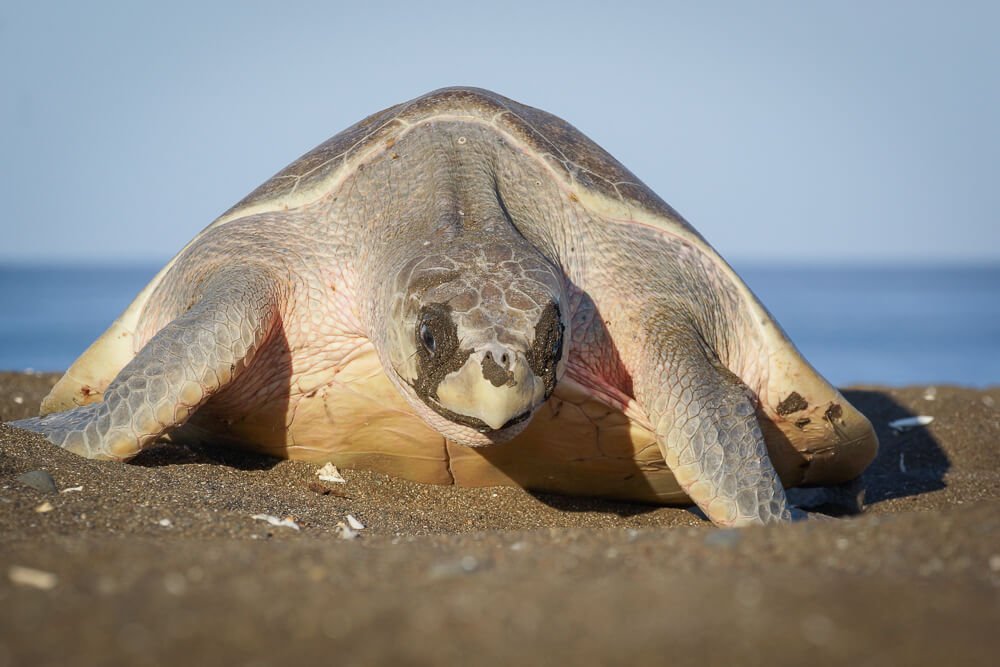The fascinating world of olive ridley turtles: characteristics and lifestyle

Turtles are fascinating and mysterious creatures that have attracted the attention of researchers and nature lovers around the world for thousands of years. One of the most interesting turtle species is the Olive Bastard Turtle, also known as the Amazon River Turtle. In this article we will take a closer look at this amazing species and learn all about its characteristics, habitat, diet and reproduction, as well as threats and protection.
Characteristics of the olive ridley turtle
The olive bastard tortoise is a medium-sized tortoise species that usually reaches a length of about 40 cm and a weight of up to 6 kg. Their shell is oval and usually greenish to brown or black in color. Females are usually larger than males and can reach a length of up to 50 cm. Their carapace is flat and has a smooth surface, which distinguishes them from other turtle species. Olive bastard tortoises have a flat snout and a long tail that ends in a horned plate.
Behavior
Olive bastard tortoises are usually quiet and often hide in bushes to protect themselves from predators. However, if disturbed, they can become aggressive and bite. They are also excellent swimmers and can travel long distances in water. Unlike other turtle species, they have the ability to stay submerged for long periods of time by taking in oxygen from the water.
Habitat and distribution
Olive bastard tortoises live in moist forests, swamps and rivers in South America and Central America. They are common in several countries including Brazil, Costa Rica, Nicaragua and Honduras. In their natural habitat, they can live up to 30 years.
Diet and reproduction
Olive bastard tortoises are omnivorous and feed on plants, fruits, insects and small animals. They also have the ability to eat carrion, which means they can feed on already dead animals. Females lay their eggs near water sources. The eggs take about 100 days to hatch, and the newborns are about 3 inches tall.
Threat and protection
Unfortunately, olive ridley turtles have been hunted by humans for their unique characteristics and tasty meat. Their habitat is also being destroyed by deforestation and pollution. Because of these threats, they are protected in some countries, such as Costa Rica.
How to help
There are several ways we can help support the conservation of olive bastard tortoises and other endangered species. One way is to support conservation organizations that work to protect turtles and other endangered animals. By donating or volunteering, we can help promote the protection of olive bastard tortoises and other endangered animals.
Another way is to avoid consuming turtle products. In some countries where olive bastard tortoises live, they are still hunted and their meat and eggs are sold in local markets. By avoiding the consumption of turtle products, we can help reduce the demand for these products and promote the conservation of olive bastard tortoises and other tortoise species.
Conclusion
The olive ridley turtle is one of the most fascinating turtle species in the world. With their unique appearance and special way of life, they have attracted the attention of researchers and nature lovers around the world. However, it is also important to note that they are hunted by humans for their unique characteristics and tasty meat. Through our efforts, we can help promote the conservation of olive ridley turtles and other endangered animals and ensure that these amazing creatures are preserved for future generations.






